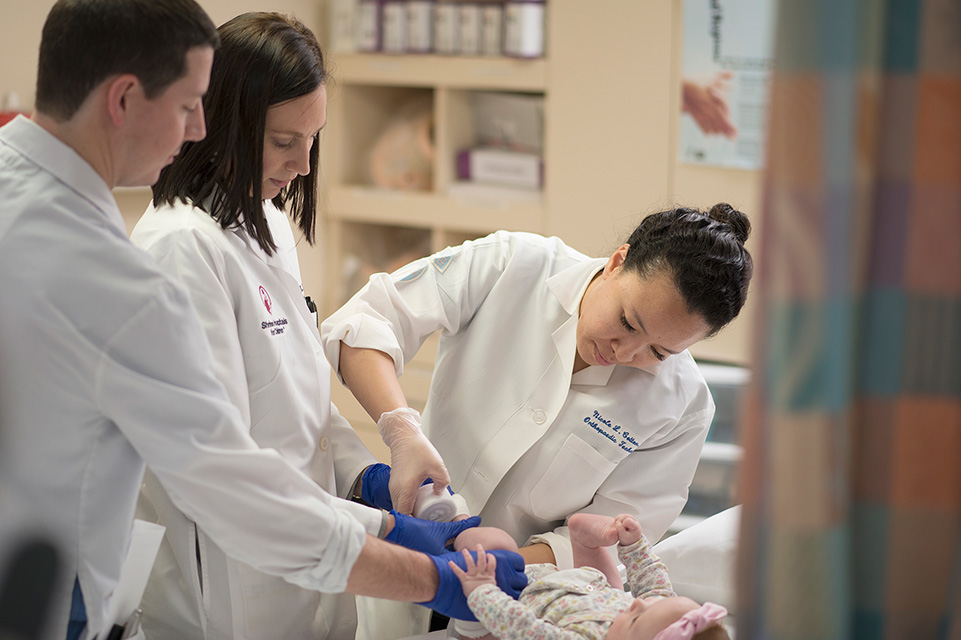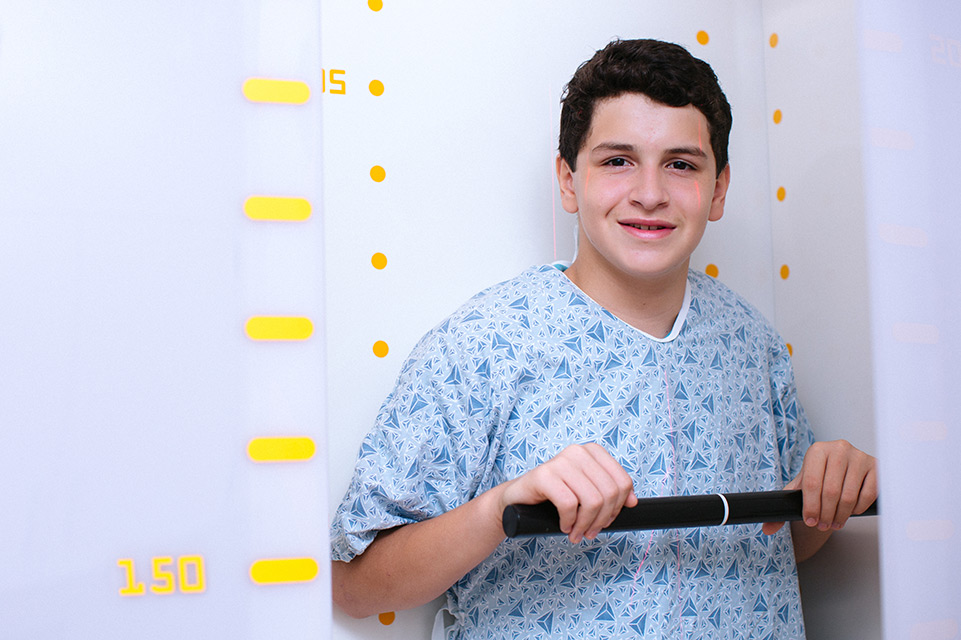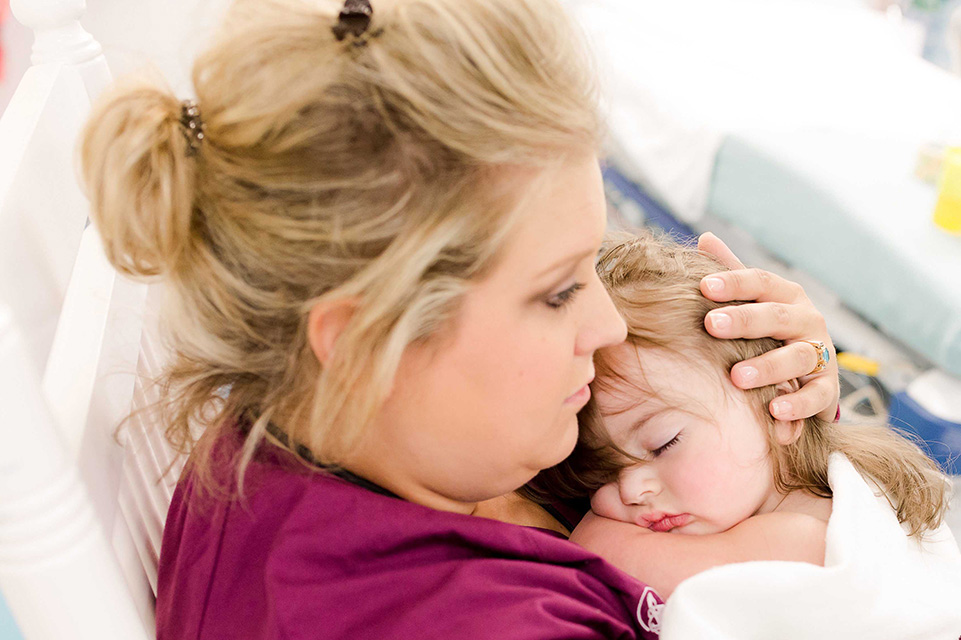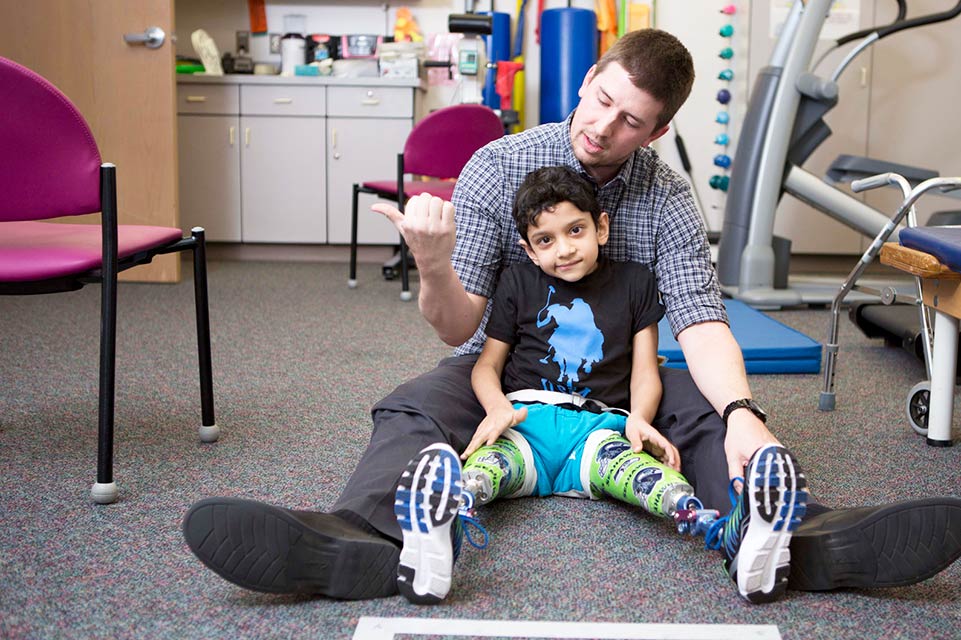Skewfoot Care
Sometimes called "Z" or serpentine foot, skewfoot affects the formation and growth of the bones in the foot.
Hooking inward, the foot has a C-shaped appearance. Skewfoot may not be diagnosed until the child is approximately 6 years old; at this age, the shape of the growing foot has been better determined. An X-ray can help confirm the diagnosis. These tools will show characteristics of skewfoot, which include:
- Ankle bone, heel bone or navicular bone are out of alignment.
- The cuneiform bone in the middle of the arch of the foot is triangular instead of square.
- The five metatarsal bones of the foot are turned inward.
Specific treatments and services may vary by location. Please contact a specific location for more information.
Skewfoot Treatment
Treatment for skewfoot depends on the child’s age at diagnosis and the severity of the condition.
Non-Surgical Treatment
Non-surgical options include intense stretching exercises and casting. For children under age 6, special shoes may be helpful. Surgery is rarely necessary for skewfoot, and is only considered if the child is in severe pain or has difficulty walking.
Surgical Treatment
To correct skewfoot surgically, bones in the foot are cut and repositioned into more normal alignment. A cast is applied to protect the foot as it heals. For a minimum of six weeks, the child cannot walk or stand. After this six-week period, if healing is progressing well, the child may receive a walking cast.
If a child does require surgery, care managers play an important role in their journey. We help all of our families navigate through the entire process — including hospitalization and discharge.

Physical Therapy Addresses Numerous Conditions
Innovative Treatments
View All Related Treatments
Radiology and Imaging

Pediatric Surgery

Physical Therapy


